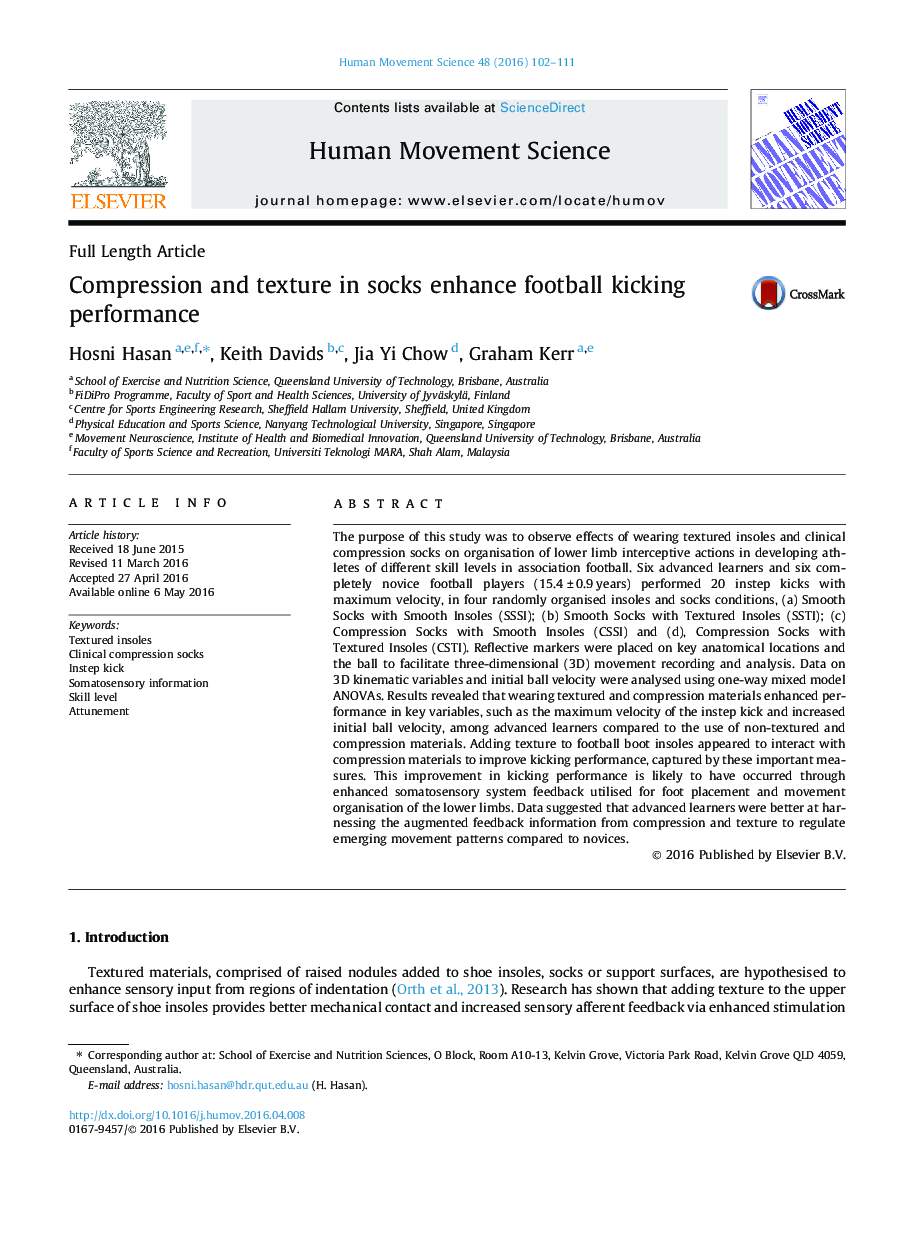| Article ID | Journal | Published Year | Pages | File Type |
|---|---|---|---|---|
| 928190 | Human Movement Science | 2016 | 10 Pages |
•Compression and added texture in socks is more functional than using textured insole only.•Skill level interacts with compression and texture to shape coordination tendencies in sport tasks.•Higher initial ball velocities can be achieved by wearing textured and compression materials.•Compression and textured materials could benefit coordination performance in athletic population.
The purpose of this study was to observe effects of wearing textured insoles and clinical compression socks on organisation of lower limb interceptive actions in developing athletes of different skill levels in association football. Six advanced learners and six completely novice football players (15.4 ± 0.9 years) performed 20 instep kicks with maximum velocity, in four randomly organised insoles and socks conditions, (a) Smooth Socks with Smooth Insoles (SSSI); (b) Smooth Socks with Textured Insoles (SSTI); (c) Compression Socks with Smooth Insoles (CSSI) and (d), Compression Socks with Textured Insoles (CSTI). Reflective markers were placed on key anatomical locations and the ball to facilitate three-dimensional (3D) movement recording and analysis. Data on 3D kinematic variables and initial ball velocity were analysed using one-way mixed model ANOVAs. Results revealed that wearing textured and compression materials enhanced performance in key variables, such as the maximum velocity of the instep kick and increased initial ball velocity, among advanced learners compared to the use of non-textured and compression materials. Adding texture to football boot insoles appeared to interact with compression materials to improve kicking performance, captured by these important measures. This improvement in kicking performance is likely to have occurred through enhanced somatosensory system feedback utilised for foot placement and movement organisation of the lower limbs. Data suggested that advanced learners were better at harnessing the augmented feedback information from compression and texture to regulate emerging movement patterns compared to novices.
